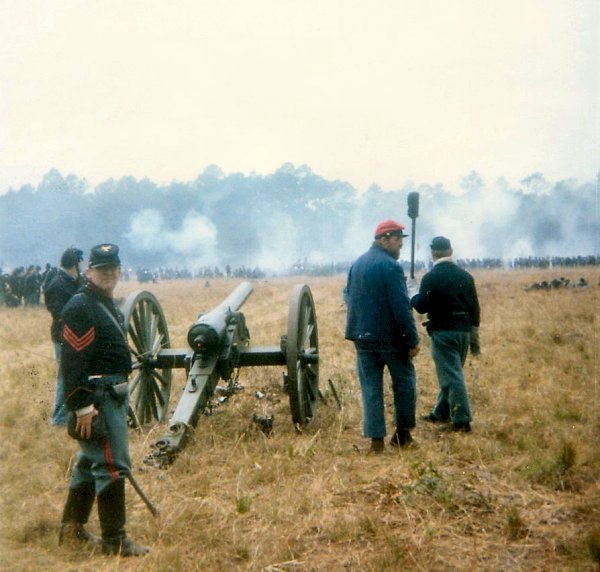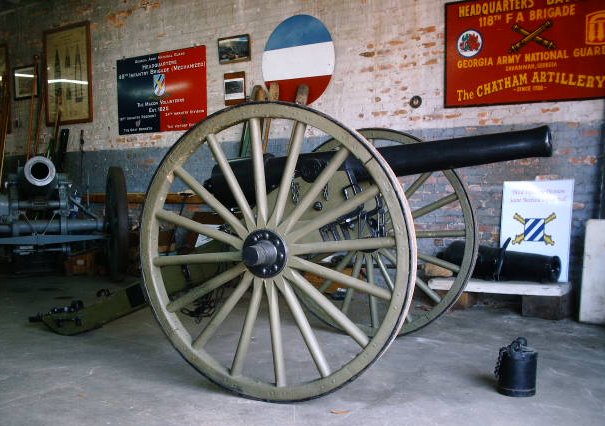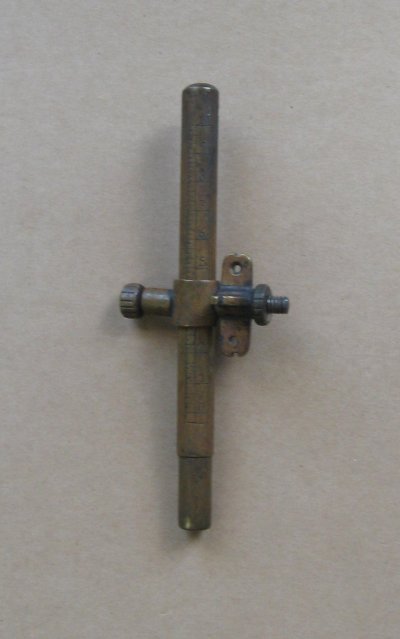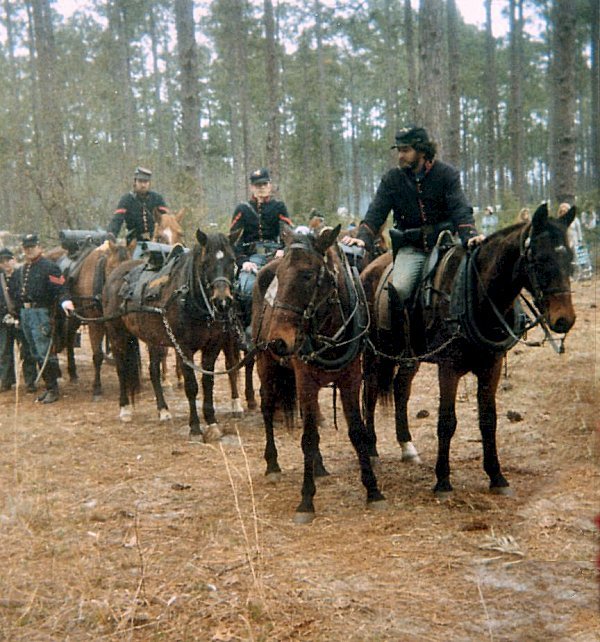
Leon Lovett leading a crew with the 10 pdr. Parrott.
Parrott Rifles were produced by West Point Foundry and all were inspected by Robert P. Parrott acting in the dual role of manufacturer and ordnance officer. Production began in May 1861. Many pieces went directly to states. The Parrotts are rifled and fire conical shaped projectiles. They are iron pieces with a distinctive banded breech. This reinforced breech allowed the somewhat brittle iron to withstand the pressure of firing. It also made the Parrott cheep to produce and comparatively light in weight. The 10 pdr. Parrott was the most common but 20, 200 and 300 Pounder Parrotts were also in service. Despite the banding around the breech, Parrott Rifles had a poor reputation because the tube sometimes ruptured while firing. This negative was accepted due the need for large numbers of artillery and the otherwise good performance of the piece.
10 pdr. Parrotts had a maximum range of 2000 yards. This outranged smoothbore field guns of the era by at least 400 yards.
Confederate manufacturers also produced their own version of the Parrott. Many Confederate Parrotts were even produced in Macon, Georgia, not far from where the Lovett Collection is located.
The 10 pdr. Parrott Rifle is mounted on the standard US Army Number 1 Carriage already in service with the 6 pounder M1841 Gun. It has simple worm screw elevation and the piece is traversed by moving the entire carriage at the trail with a lever. There is no mechanical traversing mechanism. The carriage is primarily made of wood with many iron components. Carriages were generally painted olive drab with iron parts painted black in both Federal and Confederate service. Because individual units made their own paint, variations sometimes occurred even while following the same regulations. This is why some pieces are seen painted a yellowish color.

Two sight types were in service with Parrot Rifles. The earliest was the muzzle blade/pendulum hausse sight. These were replaced by a tangent sight mounted to the right hand side of the tube.

The Parrott 10 pdr. In the Lovett Collection is a Federal piece produced by West Point in 1862. It is on a reproduction carriage with wheels that are not correct for this piece. The wheels are actually WW1 Era US Army Escort Wagon wheels.

Typical six horse team for American Civil War Era Field Artillery provided by 7th Illinois Cavalry in the 1980s. Ralph Lovett is the driver in the center, Leon Lovett stands to the rear of the team.